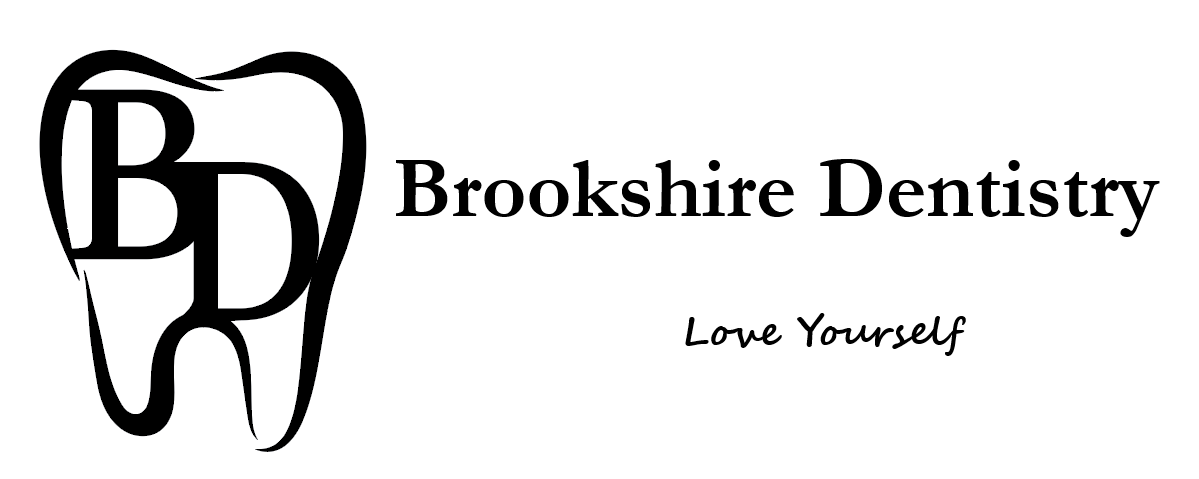I Think My Gums Are Receding
Gum recession, or gingival recession, is a common dental issue where the gum tissue surrounding the teeth pulls back, exposing more of the tooth or its root. At Brookshire Dentistry, located at 1801 Precinct Line Rd., Suite A, Hurst, TX, Dr. Salomeh Tehrani, DDS, MPH, and our team are dedicated to helping you understand gum recession and providing effective treatment options. This comprehensive guide will explore the causes, symptoms, and treatment options for gum recession, helping you take proactive steps to address this condition and maintain your oral health.
What is the Gum Recession?
Gum recession occurs when the gum tissue that covers the tooth’s root wears away, leading to a visible gap between the gum line and the tooth. This can cause the tooth to appear longer and expose the tooth’s root, which can lead to sensitivity and other dental issues.
Causes of Gum Recession
Several factors can contribute to gum recession, including:
- Periodontal Disease: Periodontal (gum) disease is the leading cause of gum recession. This bacterial infection damages the gum tissue and bone supporting the teeth, leading to gum loss.
- Brushing Too Hard: Using a hard-bristled toothbrush or brushing with excessive force can irritate and damage the gum tissue, leading to recession.
- Poor Oral Hygiene: Inadequate brushing and flossing can result in plaque buildup, which can lead to gum disease and recession.
- Genetics: Some people may be genetically predisposed to gum recession. If you have a family history of gum disease, you may be at higher risk.
- Misaligned Teeth: Crooked or misaligned teeth can place uneven pressure on the gums and contribute to recession.
- Tobacco Use: Smoking or using other tobacco products can impair blood flow to the gums, leading to gum disease and recession.
- Hormonal Changes: Hormonal changes, such as those occurring during pregnancy, menstruation, or menopause, can affect gum health and increase the risk of recession.
- Bruxism: Chronic teeth grinding (bruxism) can put excessive pressure on the teeth and gums, contributing to recession.
- Inadequate Dental Work: Poorly fitted dental restorations or appliances can cause irritation and gum recession.
Symptoms of Gum Recession
Recognizing the symptoms of gum recession can help you seek timely treatment. Common symptoms include:
- Visible Tooth Roots: Exposed tooth roots may become visible as the gum tissue recedes, making the teeth appear longer.
- Tooth Sensitivity: Exposed tooth roots can lead to increased sensitivity to hot, cold, or sweet foods and beverages.
- Gum Line Changes: The gum line may appear uneven or recede, creating a gap between the teeth and the gums.
- Swollen or Bleeding Gums: Receding gums may be accompanied by swelling, redness, or bleeding, especially when brushing or flossing.
- Bad Breath: Gum recession can lead to the buildup of bacteria and plaque, causing persistent bad breath.
- Loose Teeth: In severe cases, gum recession can lead to the loosening of teeth due to the loss of supporting gum tissue and bone.
Diagnosing Gum Recession
If you suspect your gums are receding, it’s essential to schedule an appointment with Dr. Salomeh Tehrani at Brookshire Dentistry for a thorough evaluation. During your visit, we will:
- Conduct a Comprehensive Examination: We will examine your gums, teeth, and overall oral health to assess the extent of the recession and identify any underlying issues.
- Measure Gum Pockets: Using a periodontal probe, we will measure the depth of the gum pockets around your teeth. Increased pocket depth can indicate gum disease and recession.
- Review Your Medical and Dental History: We will discuss your medical and dental history, including any symptoms, habits, or conditions that may contribute to gum recession.
- Take X-rays: Dental X-rays may be necessary to evaluate the health of the bone supporting your teeth and to identify any damage or infection.
Treatment Options for Gum Recession
Treatment for gum recession depends on the severity of the condition and its underlying causes. At Brookshire Dentistry, we offer a range of treatment options to address gum recession and restore your oral health:
Improving Oral Hygiene
Maintaining proper oral hygiene is crucial for preventing and managing gum recession. Brush your teeth twice daily with a soft-bristled toothbrush and fluoride toothpaste. Floss daily to remove plaque and food particles from between your teeth.
- Brushing and Flossing: Maintaining proper oral hygiene is crucial for preventing and managing gum recession. Brush your teeth twice daily with a soft-bristled toothbrush and fluoride toothpaste. Floss daily to remove plaque and food particles from between your teeth.
- Regular Dental Cleanings: Professional dental cleanings help remove plaque and tartar buildup that can contribute to gum recession and periodontal disease. We recommend scheduling regular cleanings with our team.
Scaling and Root Planing
Scaling and root planing is a non-surgical procedure used to treat gum disease and reduce gum recession. The procedure involves:
- Scaling: Removing plaque and tartar from the tooth surface and below the gum line.
- Root Planing: Smoothing the tooth roots to promote gum reattachment and reduce inflammation.
Gum Grafting
Gum grafting is a surgical procedure used to restore lost gum tissue and cover exposed tooth roots. There are different types of gum grafts, including:
- Connective Tissue Graft: A flap of tissue is removed from the roof of the mouth and transplanted to the affected area.
- Free Gingival Graft: Tissue is taken directly from the roof of the mouth and placed over the exposed tooth roots.
- Pedicle Graft: Tissue is taken from the adjacent gum area and moved over the receded area.
Gum grafting helps restore gum tissue, reduce sensitivity, and improve the appearance of your smile.
Pinhole Surgical Technique
The pinhole surgical technique is a minimally invasive procedure used to treat gum recession. During this procedure:
- Small Pinhole: A small pinhole is made in the gum tissue near the affected area.
- Gum Tissue Repositioning: Specialized instruments are used to gently reposition the gum tissue to cover the exposed tooth roots.
- Collagen Membranes: Collagen membranes may be placed to support the tissue and promote healing.
This technique offers a quicker recovery time and minimal discomfort compared to traditional gum grafting.
Treatment of Underlying Conditions
Addressing any underlying conditions contributing to gum recession is essential for effective treatment. This may include:
- Treating Periodontal Disease: Managing gum disease through scaling, root planing, and other therapies.
- Addressing Misaligned Teeth: Correcting misalignment issues through orthodontic treatment.
- Managing Bruxism: Using a nightguard or other measures to reduce teeth grinding.
Lifestyle and Home Care
Avoiding tobacco products and adopting a healthy diet can improve gum health and prevent further recession. Also, using a soft-bristled toothbrush and avoiding hard-bristled brushes helps avoid damaging gum tissue.
Preventing Gum Recession
Preventing gum recession involves maintaining good oral hygiene and addressing any factors that may contribute to the condition. Here are some tips to help prevent gum recession:
- Brush Gently: Use a soft-bristled toothbrush and avoid brushing too hard. Brush your teeth in gentle, circular motions.
- Floss Daily: Flossing helps remove plaque and food particles from between your teeth and along the gum line.
- Regular Dental Visits: Schedule regular check-ups and cleanings with Dr. Salomeh Tehrani to monitor your oral health and address any issues early.
- Manage Dental Issues: Seek treatment for any dental problems, such as misaligned teeth or bruxism, to prevent additional stress on your gums.
- Avoid Tobacco: Refrain from smoking or using other tobacco products to reduce your risk of gum disease and recession.
Conclusion
Gum recession is a common dental issue that can impact your oral health and overall well-being. At Brookshire Dentistry, Dr. Salomeh Tehrani, DDS, MPH, and our team are committed to helping you understand gum recession and providing effective treatment options to restore your gum health. By recognizing the causes and symptoms of gum recession and taking proactive steps to address it, you can maintain a healthy, beautiful smile.
If you suspect your gums are receding or have any questions about gum health, please contact our office at (817) 577-9200 to schedule a consultation. We are here to provide compassionate care and support to help you achieve optimal oral health.
Office Hours
MON8:00 am - 5:00 pm
TUE8:00 am - 5:00 pm
WED8:00 am - 5:00 pm
THU8:00 am - 5:00 pm
FRI8:00 am - 4:00 pm
SATClosed
SUNClosed



